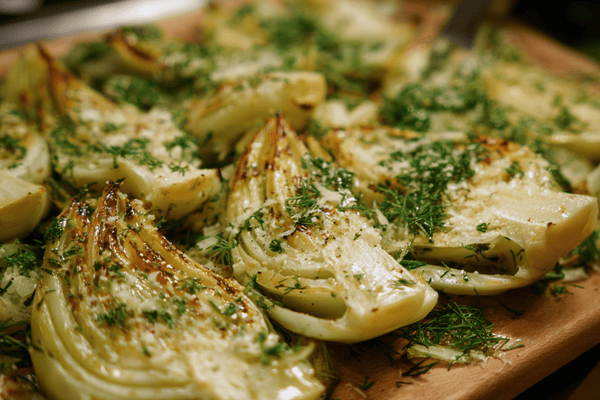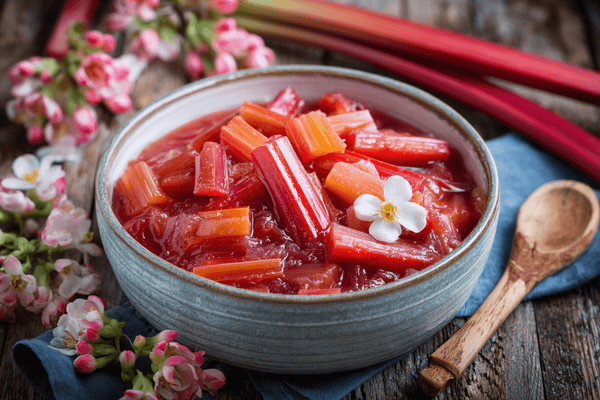
A VG-10 Stainless Steel is a premium Japanese blade that is made from high-quality steel. The quality of steel will often heavily influence how easy it is to sharpen your knife and it’s easy to feel slightly intimidated or unprepared when it comes to sharpening a knife of such quality.
We find that most people are always cautious when it comes to sharpening a VG-10 blade as they don’t want to make a mistake or potentially ruin their knife. This, therefore, leads to the question of how to correctly sharpen a vg-10 steel.
To correctly sharpen a VG-10 Japanese blade you need to follow a few simple steps. Firstly, use the correct sharpening tool in the form of whetstone with a suitable degree of coarse (400/1000 grade is a good starting point).
Secondly, make sure you use a sharpening angle that is the same as the factory formed edge and finally, sharpen your knife to build up a burr using a coarse stone and then use a finer coarse stone to refine and polish the edge.
The process for correctly sharpening a VG10 knife is not too different from most other knives, there are however some important factors that you need to be aware of to get the perfect edge and we’ll cover these in more detail in this article.
Table of contents
what is vg-10 steel ?
VG-10 is high-quality stainless steel that is often used in premium kitchen knives and other types of knives that need to maintain a sharp edge for long periods of time. The steel contains a high amount of carbon as well as vanadium and chromium which all contribute to the hardness, wear-resistance, and corrosion resistance of the steel.VG10 steel vsS30V what's the difference?
With vg10 vs s30v the main difference between VG-10 steel and S30V steel is that VG-10 is slightly tougher while S30V is harder. This means that knives made from VG-10 are less likely to chip or break but they may need to be sharpened more often than those made from S30V.Is VG10 Steel Easy to Sharpen
VG10 is more premium steel and while premium steel is “easier” to sharpen, you should not confuse the term easy with fast. When sharpening a knife of any material there are a few factors to take into consideration:
The toughness of the metal - Some metals are harder than others and will therefore need a coarser material to sharpen. You should never need to use more physical effort to get a blade sharp, if you find this is the case then you are using the wrong tool for the job.
Blade profile - the more dull a blade's edge is, the more time and effort you will need to give it in order to reform and sharpen a new edge. Blades that are maintained weekly will be much easier to sharpen than those that are neglected and don’t have regular honing after use.
Sharpening tool - A fine blade like a VG10 will not be sharpened by a normal steel as the blade is too tough, therefore whetstones with varying degrees of grit grade would need to be used to manipulate a finer edge.
VG10 is a premium steel, it should be very easy to sharpen provided you use the correct tools, have not let the profile of the blade become too dull, and finally, realize that the process could take anywhere from 10 - 40 minutes to get the desired edge sharpness.
Just because it can be easy to sharpen a VG10 knife does not mean it’s fast, therefore we are now going to run through how you can correctly sharpen your VG10 knife for a perfect edge every time.
Best Tools for Sharpening a VG10 Blade
Before we get into the correct sharpening technique for a VG10 blade, you first need to know that to sharpen a VG10 blade certain tools are better suited to the task. If you want a razor-sharp edge then make sure you have some of these tools listed below:
Ceramic or diamond tipped Sharpening Rod - Firstly, honing on a ceramic rod should be a frequent thing you do before using a stone to sharpen an edge. Honing helps to maintain a sharp edge however with VG10 blades, you will need to use a ceramic sharpening rod and not a steel one.
Whetstone - A whetstone should be your primary method for sharpening a VG10 blade and this technique alone will be enough to get you a nice sharp edge with any of the other tools or techniques that we’ll mention.
A good combination for a VG10 knife is a 400/1000 grit whetstone which will give you a coarse side needed to form a burr and a finer coarse level to refine and sharpen the edge.
Leather Strop - There are mixed opinions over whether or not you should use a leather strop to polish the edge of a premium blade like a VG10. A beginner could easily deform the edge if they don’t know how to strop correctly whereas a professional can strop and get the finest, most polished edge you’ll come across.
In our opinion, we’d recommend not stropping a VG10 knife until you can sharpen a range of knives to a high standard using water stones and sharpening rods first. If you are confident of using a strop, then a few passes between each coarse stone will do a great job of really refining and polishing up the knife edge.
Diamondstone - Again, this is a tool you might be familiar with when sharpening knives and can sometimes be recommended for sharpening a VG10 blade however, a diamond stone is too coarse to properly sharpen a VG10 knife and we’d advise that you use a whetstone with coarse grades mentioned above.
How to Correctly Sharpen VG10 Japanese Blades
The following is a step by step process that you can use to correctly sharpen your VG10 knife and ensure that you are getting a razor-sharp edge each time. For this, you will need a whetstone with a coarse grit and a finer grit.
We are using the example of a 400/1000 grit however you can also additionally add a finer grit of 2000 - 8000 depending on how fine an edge you want to create.
Set the Sharpening Angle
This is the most important step when it comes to creating a sharp edge, Japanese knives like the VG10 are much sharper than the western equivalents due to a smaller sharpening angle. For a VG10 you will want to check the factory information to know what initial edge angle the knife was manufactured to have.
If you are more experienced, then you can check the knife bevel yourself to determine the angle or simply rest the knife down on the whetstone until the bevel is flat (as this will be your cutting angle).
For most Japanese knives, the angle will be around 15 degrees on one side, this should then be matched on the other side for double bevel knives. We cover this in more detail in 'The Correct Angle to Sharpen Your Knives'.
The Correct Japanese Knife Sharpening Angle
Create the Edge
Once you have your desired angle you will next want to create/maintain/reform a sharp knife-edge, to do this you will need to go through the process of creating a burr.
This is done using the coarse whetstone and for those new to knife sharpening, a burr is essentially microscopic teeth that give the blade edge it’s sharpness. To create a burr, you will need to pass the knife over the whetstone for multiple passes that could take 5 - 20 minutes depending on how dull your blade is.
Make sure to keep a consistent motion without applying pressure to the knife, also check frequently for any burrs, and ensure you apply focus to the heel, mid-portion, and tip of the blade to create even distribution all the way along the knife's edge.
Turn the Knife Over and Repeat
Once you have found the burr on one side and it’s consistent from the tip to the heel of the knife you should flip the knife over and repeat this exact process on the other side to create a sharp edge for your VG10 knife.
Note - this only applies to a knife that has a double bevel blade.
Refine the Edge
Once you have the burrs on both sides of the knife you can then look to use a finer grade grit to polish and refine the edge. Simply repeat the steps above (taking less time and passes) on a finer whetstone grade.
This is the time when you can also stop to refine the edges.
FAQ
Q: What is VG10 steel?
A: VG10 is a type of stainless steel commonly used in Japanese knife blades. It is known for its high hardness, excellent edge retention, and resistance to corrosion. VG10 steel is popular among knife enthusiasts and professionals due to its performance and ability to maintain a sharp edge.
Q: Why is it important to sharpen VG10 Japanese blades correctly?
A: Sharpening VG10 Japanese blades correctly is important to maintain their exceptional cutting performance. VG10 steel is known for its hardness, which means it requires specific techniques and tools to achieve optimal sharpness without damaging the blade. Proper sharpening ensures that the blade retains its edge and performs at its best.
Q: What tools do I need to sharpen VG10 Japanese blades?
A: To sharpen VG10 Japanese blades, you will need a sharpening stone or whetstone. It is recommended to have at least two stones with different grits (coarse and fine) to achieve a proper sharpening process. Additionally, a honing rod or ceramic honing rod can be used for regular maintenance and edge alignment.
Q: How often should I sharpen VG10 Japanese blades?
A: The frequency of sharpening VG10 Japanese blades depends on factors such as usage, cutting techniques, and personal preference. On average, it is recommended to sharpen VG10 blades every few months with regular honing in between to maintain optimal sharpness. However, individual needs may vary, so it's best to monitor the blade's performance and sharpen as needed.
Q: Can I use an electric sharpener for VG10 Japanese blades?
A: It is generally not recommended to use an electric sharpener for VG10 Japanese blades. Electric sharpeners are designed for Western-style knives and may not provide the precision and control needed for sharpening VG10 blades. The high hardness of VG10 steel requires a more delicate and precise sharpening process that is best achieved with a traditional sharpening stone or whetstone.
Q: How can I maintain the sharpness of VG10 Japanese blades between sharpening sessions?
A: To maintain the sharpness of VG10 Japanese blades between sharpening sessions, regular honing is essential. Using a honing rod or ceramic rod, gently realign the blade's edge by sliding it along the rod at a consistent angle. This process helps to maintain the blade's sharpness and improve its cutting performance. Honing should be done regularly, depending on the frequency of knife usage.
Q: Are there any specific storage recommendations for VG10 Japanese blades?
A: Proper storage of VG10 Japanese blades is important to protect the edge and prevent damage. It is recommended to store the knife in a knife block, a knife sheath, or on a magnetic knife strip. Ensure that the blade is clean and dry before storage to prevent moisture buildup. Avoid storing the knife in a drawer where it can come into contact with other utensils or surfaces that may dull or damage the edge.
Q: Can I use a honing guide when sharpening VG10 Japanese blades?
A: While honing guides can be useful for maintaining a consistent sharpening angle, they are not typically used when sharpening VG10 Japanese blades. The hardness and thinness of VG10 blades require a delicate touch and more control during sharpening. It is best to develop the skill of maintaining a consistent angle by eye or with the help of an angle guide before attempting to sharpen VG10 blades.
Q: Is it necessary to use different grits of sharpening stones for VG10 Japanese blades?
A: Using different grits of sharpening stones is highly recommended for sharpening VG10 Japanese blades. Starting with a coarse grit stone helps remove any nicks or dullness from the blade, while a finer grit stone is used to refine the edge and achieve a sharper finish. The combination of coarse and fine grit stones allows for a gradual and controlled sharpening process, resulting in a well-honed edge.
Final Thoughts
A high quality, VG10 Japanese knife is a blade that you will want to maintain and keep in excellent condition which means regular sharpening should be a top priority.
Honing is a crucial process and something that should be done frequently however, this process will not maintain a sharp edge indefinitely and therefore you need to be proactive and ensure your edge does not become dull over time.
As long as you follow some of the steps above then sharpening a VG10 is no different from sharpening any other type of knife (either Japanese or Western) and you should find that it’s just as easy to do provided you use the correct tools for the task.


